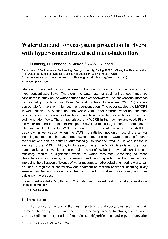摘要
Sediment transport is one of the main concerns in a river system with hyper-concentrated flows. Therefore, the water use for sediment transport must be considered in study on the water demand for river ecosystem. The conventional methods for calculating the Minimum Water Demand for River Ecosystem (MWDRE) are not appropriate for rivers with high sediment concentration. This paper studied the MWDRE in wet season, dry season and the whole year under different water-and-sediment conditions in the Lower Yellow River, which is regarded as a typical river with sediment-laden flows. The characteristics of MWDRE in the river are analyzed. Firstly, the water demand for sediment transport (WDST) is much larger than the demands for other riverine functions, the WDST accounts for the absolute majority of the MWDRE. Secondly, in wet season when the WDST is satisfied, not only most of the annual incoming sediment can be transported downstream, but also the water demands for other river functions can be satisfied automatically, so that the MWDRE in wet season is identical to the WDST. Thirdly, in dry season, when the WDST is satisfied, the water demands for other river functions can also be satisfied, but the low sediment transport efficiency results in significant waste of water resources. According to these characteristics and aiming at-decreasing sediment deposition in the riverbed and improving the utilization efficiency of water resources, hydrological engineering works can be used to regulate or control flow and sediment so that the sediment incoming in dry season can be accumulated and be transported downstream intensively and thus efficiently in wet season.
- 出版日期2004-8
- 单位北京大学
